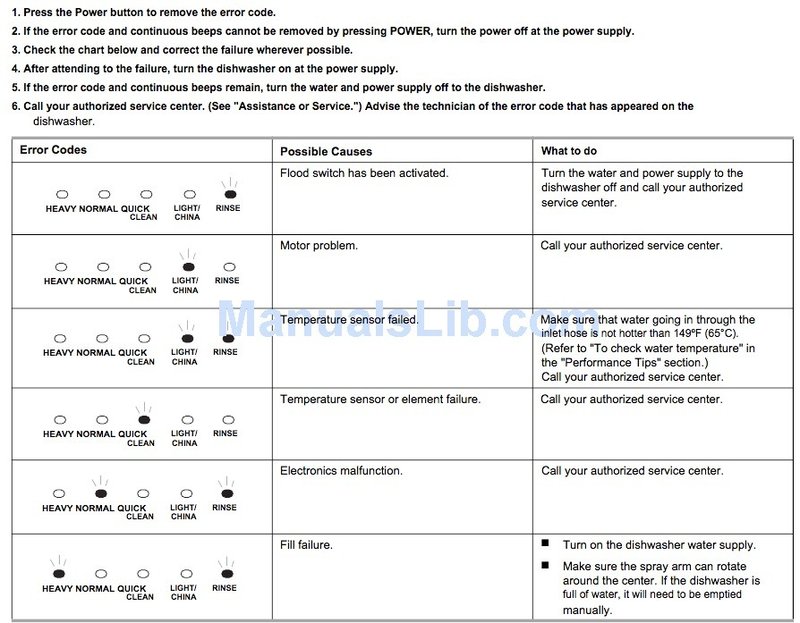
The E3 error code is a signal that your dishwasher isn’t heating the water to the expected temperature. You might be thinking, “Doesn’t sound too serious?” Well, that’s where a bit of caution comes in. While the machine might still run, using it like this could impact how clean your dishes get and may even lead to further damage over time. Understanding what’s going on under the hood and how to address it can keep your dishwasher running smoothly and your dishes sparkling clean.
What Causes the E3 Error Code in KitchenAid Dishwashers?
Let’s start by demystifying what triggers the E3 error code. Essentially, this code indicates a problem with the dishwasher’s heating element. Think of the heating element as the trusty kettle in your kitchen. Just as a kettle heats water for your favorite cup of tea, the heating element warms the water in your dishwasher to effectively clean and sanitize dishes. When it fails, the water doesn’t get hot enough, which can be a problem.
There are a few common culprits behind this issue. One potential cause could be a faulty heating element. Over time and with regular use, these elements can wear out, much like a light bulb that goes dim before it burns out. Another possible cause could be a malfunctioning thermostat, which misreads the temperature and doesn’t allow the heating element to turn on. It’s like your thermostat thinking your house is warmer than it is, so it doesn’t kick the heater on during a chilly day.
A glitch in the control board can also throw this error code. The control board is essentially the brain of your dishwasher, telling each part what to do. If the signals aren’t getting sent properly, the heating element might not turn on at all. Identifying the exact cause requires a bit of investigation but rest assured, these issues are all part of a common toolkit for dishwashers.
Potential Risks of Using a Dishwasher with an E3 Error
You might be tempted to ignore the E3 error and continue using the dishwasher, but there are potential consequences to consider. A dishwasher that can’t heat water adequately may not clean dishes properly. Think about trying to wash a greasy pan with cold water – it just doesn’t cut it. Without hot water, your dishwasher might leave residue and bacteria on your dishes, which isn’t ideal for health and hygiene.
Beyond cleanliness, consistently using a dishwasher with an unresolved E3 error can lead to more significant issues. Like driving a car with a flashing engine light, continued use might exacerbate the underlying problem. For instance, a continually malfunctioning heating element can place additional strain on other components, leading to further failures down the line.
Moreover, if there’s a deeper electrical fault, using the dishwasher might even pose a safety hazard, like a short circuit. While this isn’t common, it’s something you’d want to avoid. As the saying goes, it’s better to be safe than sorry, and this is especially true when dealing with household appliances.
Steps to Address the E3 Error Code
So, you’ve got an E3 error code staring you down. What next? First, don’t panic. You can start by checking the heating element and the thermostat. If you’re handy with a multimeter, you can check the element for continuity to ensure it’s functioning. Remember, treating the heating element gently is key, as it can be as delicate as handling a fragile teacup.
For most folks, though, calling in a professional is a wise move. A trained technician can diagnose the problem accurately and safely. They’ll have the tools and expertise to fix or replace faulty components without risking further damage. You might think of this like calling a vet for your pet – sometimes a professional touch is the best course of action.
While waiting for help, it’s a good idea to refrain from using the dishwasher. Consider handwashing your dishes temporarily. It’s a bit old school, but it guarantees clean dishes until everything’s back in working order. And of course, always check your dishwasher’s warranty. You might find that repairs or part replacements are covered, saving you a few bucks.
Preventative Tips for a Healthy Dishwasher
Maintaining your KitchenAid dishwasher to avoid common error codes like E3 is similar to regular car tune-ups. By taking simple preventive measures, you can extend your dishwasher’s life and keep it running efficiently. Start by regularly cleaning the filters – a blocked filter can prevent water from heating correctly, much like how a clogged sink causes a mess.
Keep an eye on your dishwasher’s loading habits, too. Overloading can impede water flow and impact performance, just like trying to carry too many groceries in one trip to save time can result in a disastrous spill. Spacing out dishes properly will let the water and detergent do their job.
Finally, periodically run a maintenance cycle using a dishwasher cleaner. This helps remove residue build-up that can affect performance and prevents issues like heating element malfunction. Staying proactive with these tips doesn’t just avoid error codes; it keeps your dishwasher a reliable kitchen partner.
In conclusion, the E3 error code is a signal that the dishwasher might not be heating water as it should. While it might be tempting to push through, ensuring your dishwasher is safe to operate and dishes are clean is worth the short-term inconvenience. With a bit of patience and the right steps, you’ll have your dishwasher back on track in no time.